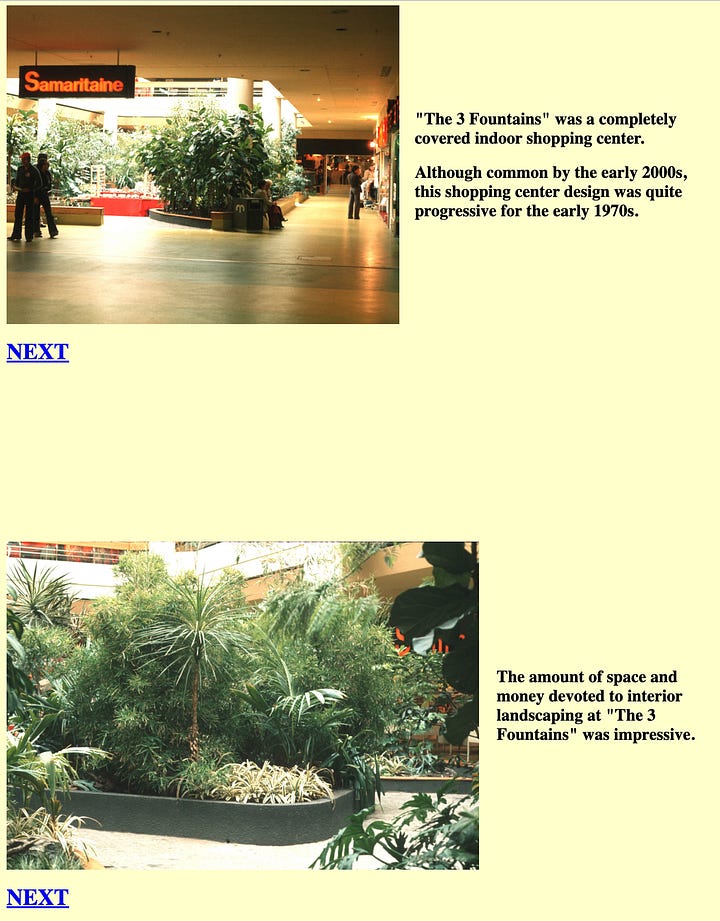I was given a copy of Annie Ernaux’s Exteriors as a Secret Santa gift in December by a fellow freelancer. We were at the Christmas party of an agency we were both working for at the time, and it was the first time we had ever met, so it’s amazing that, of all of Annie’s books, he would pick that one. In a tangential way, it’s about urban planning — a topic I am endlessly fascinated by for how it shapes the way people live and interact with each other and their surroundings.
In it, Annie observes her fellow residents of Cergy-Pontoise, a new town built on the outskirts of Paris in the 1960s. With vignettes of clerks in the local shopping centre, parents and children, homeless men, people on trains to and from the city, young couples fighting and making up and out, it is largely descriptive, but beneath the description is always an insight into the state of the world — on class or motherhood, inequality or consumerism, access or mobility.




The book is only 74 pages long — as many of her books are — but for some reason, I put it down about three-quarters of the way through several months ago, and only picked it up again today while I rode the tube home.
Its last few pages made me think that although I didn’t realise it at the time, I must have been holding Exteriors, at least loosely, in my mind when I wrote the story below back in early April about the Sad DLR Guy.
The DLR (or Docklands Light Railway) is, according to Google, an “automated light metro system primarily serving the redeveloped Docklands area of London and providing a direct connection between London’s two major financial districts.” Since I live nowhere near the Docklands and work in neither of London’s financial districts, it is very rare for me to take the DLR. But late at night on the 7th of April, I found myself riding it home from City Airport after a flight back from Milan.
Maybe it’s because I was tired, or maybe because in post-flight delirium, I fancied myself the Annie of my generation, I was mesmerised by the guy running this train that isn’t quite a train. So much so that I pretty much watched his every move until I got off at Bank, and frantically wrote this little story on the Northern line from Bank back to Tooting. I hope he didn’t notice. I doubt he did. He seemed much too preoccupied with his own inner turmoil and the light rail he was semi-operating.
Anyway, I thought I would share it because — not to liken myself to the Nobel Laureate that is Ernaux — I do feel like it says something about something that isn’t just a guy running a train.
Sad DLR guy
I got on the DLR at London City Airport and was surprised to see that it was driverless. Only when I stepped on did I realise that it wasn’t — at least not entirely. It was run by a beefy young guy, maybe 29, maybe 33. Red hair with frosted tips, a wide Slavic face and tired eyes.
It seemed a little unfair that he didn’t get a cabin to himself up the front like other public train drivers. All he got was a ring of keys and spanners, a panel of buttons, and a speaker phone he had to lean down awkwardly to speak into.
He was tired. So tired that he almost looked angry, but maybe he was that as well. I expected him to have a European accent, but when he leant down awkwardly to speak into the too-low speaker phone — the kind you get in lifts for emergencies — his voice was thick with a South London twang.
As we pulled into each stop, he turned his lever, pressed his buttons, looked up and down the platform, pressed his buttons and turned his lever again. His job was more like a half job. The train drove itself. It stopped by itself. It just needed help opening its doors and occasionally reminding passengers to tap out as they left the station.
If there were longer gaps between stops, he would sit down for a while. A perpetual passenger, never getting off, but never with his own space. He would yawn deeply, unclipping the video and audio device from his waistband so he could lean his elbows on his knees, rub his eyes, and look more closely at the small tattoos on his large arms. He had a cross behind his ear as well, and combined with his strong frame, they made me think that maybe he fought when he wasn’t riding the DLR and driving it too.
He must have taken that journey a thousand times from the way he moved from one door to the opposite, depending on which side the platform was on. What does he think about all the time? Or is it the kind of job where you need to get yourself in a trance to endure it?

A bit of a different vibe to my usual post, but what is Substack for if not sharing the things your mind provides you with?
See you in the next one,
Annabel




